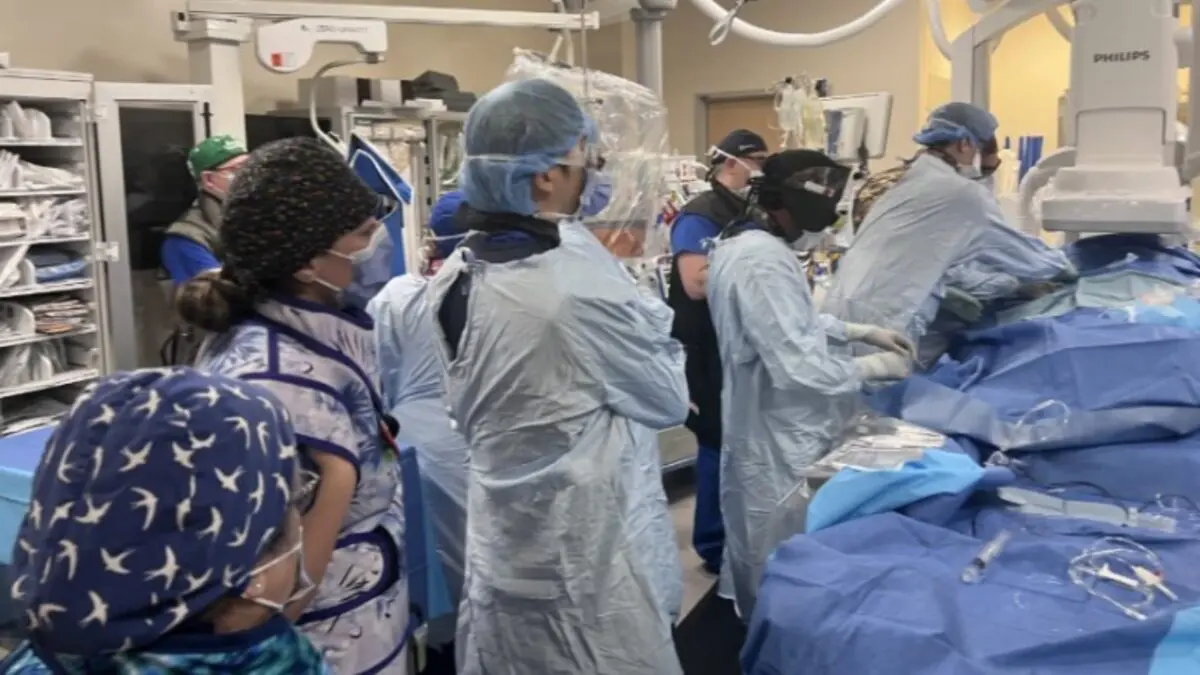“We all learn from each other,” says Naomi Eisenberg, Vascular Database Manager, Peter Munk Cardiac Centre, and Lead Regional Data Manager, SVS Vascular Quality Initiative, a clinical registry which announced a milestone of one million procedures in September. (Photo: UHN)
The Vascular Quality Initiative (VQI) clinical registry announced a milestone of one million procedures in September, a promising achievement for the international registry dedicated to improving vascular care through a data-driven approach to treatment.
VQI data has prompted changes in practice that have saved and improved thousands of lives.
With more than 950 centres and 2,500 physicians participating internationally, the registry allows centres and providers to compare their performance to regional, national, and international benchmarks.
As a Society for Vascular Surgery (SVS) initiative, the database also serves to develop and revise clinical practice guidelines.
“Toronto General Hospital joined in 2010 as an early adopter recognizing the importance registry data provides in monitoring and improving quality care,” says Dr. Graham Roche-Nagle, Interim Division Head, Vascular Surgery, Peter Munk Cardiac Centre, University Health Network.
“The rapid growth of SVS VQI in Canada across seven sites is a testament to the engagement and dedication of the vascular specialists, their commitment to improving the care they deliver to patients, and the value they find in the registry.”
Biannual regional meetings bring together vascular teams for a multidisciplinary discussion in a supportive environment. As a patient safety organization (PSO), VQI data cannot be used to promote individual programs or encourage competition between centres.
“VQI is aimed at creating a culture of improvement, not punishment,” explains Naomi Eisenberg, Vascular Database Manager, Peter Munk Cardiac Centre, and Lead Regional Data Manager, SVS VQI.
“When you share your data – what you’re doing well and doing poorly – then you and your colleagues can really dive in and see what’s going on,” she says. “What’s working well, what isn’t, what can be improved, and how.
“We all learn from each other.”
Members have used VQI data to significantly improve the delivery of care, reducing complications for patients and expenses for hospitals.
“One of the things we’ve improved in our program is that we’ve dramatically reduced our length of stay for our endovascular aneurysm repair procedures,” says Naomi.
“Ours was above the average so we looked at those cases and instituted changes across the program. Because of VQI, our length of stay went from four days to one day.”
The growth of the registry enriches the data, adding to the body of knowledge that prompts centres to improve patient care. For Naomi, this evidence-based approach to vascular treatment is a passion.
“To me, vascular patients are complex on many system levels,” she says. “They have so much going on and if there’s something that can be done to help them, something to improve their experience with us, I want to do it. These patients deserve every opportunity.”



